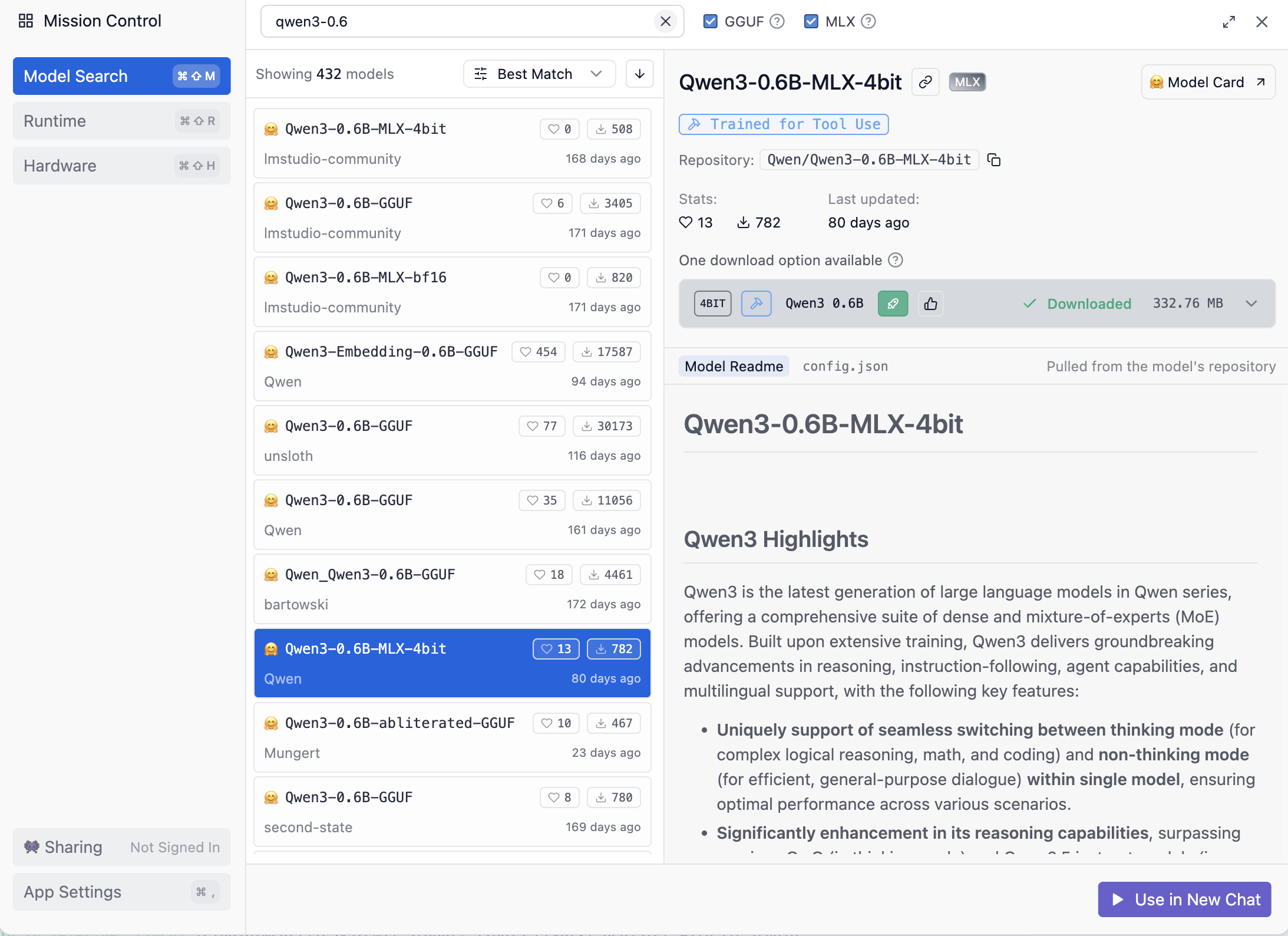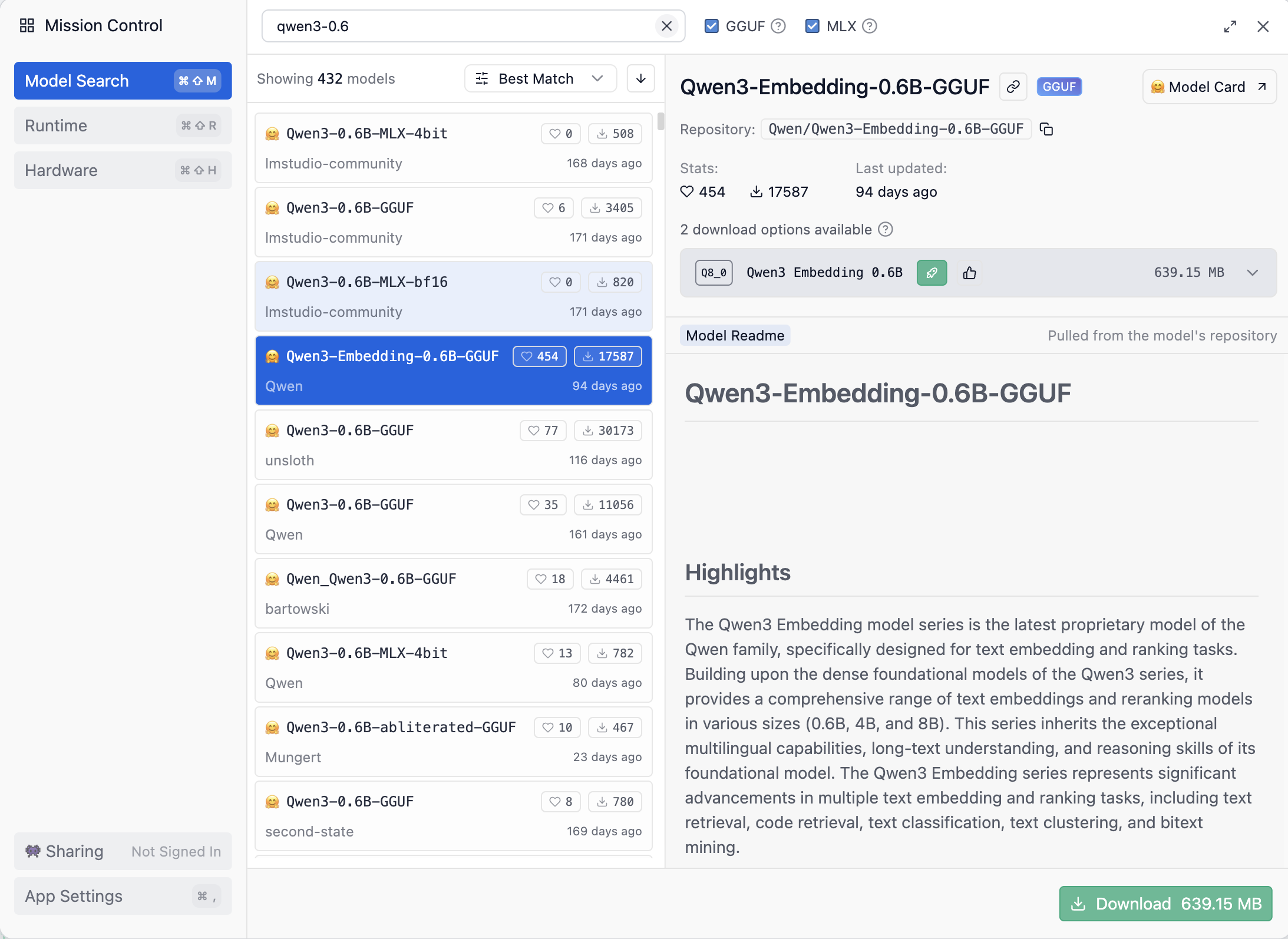2025 DCI Workshop: Software Installation
Pre‑Workshop Instructions
This guide helps you install and verify the two desktop tools we’ll use during the workshop: LM Studio and Cherry Studio. Set aside 20–40 minutes, depending on your network speed.
Prerequisites
- Supported OS: recent macOS or Windows 10/11. If your OS is not updated with latest patches, the instructions may not work.
- Disk space: 2–5 GB free (models require additional space; see notes below).
- Internet access to download apps and at least one small model.
- Admin rights to install applications.
LM Studio
- Official site: https://lmstudio.ai
- Docs: https://lmstudio.ai/docs/app
macOS (Apple Silicon/M Series or Intel)
- If your Mac was purchased after 2021, it is Apple Silicon (M Series). If it was purchased by 2020, it is Intel.
- Download LM Studio from the official site and open the
.dmg. - Drag the LM Studio app into
Applications. - Launch LM Studio from
Applicationsor Spotlight. - If macOS blocks the app (Gatekeeper), open
System Settings → Privacy & Security, find LM Studio under “Security” and chooseOpen Anyway.
Windows 10/11
- Download the LM Studio installer (
.exe) from the official site. - Double‑click to run the installer and follow prompts to complete installation.
- If SmartScreen appears, click
More info → Run anyway(if you trust the source) and continue. - Launch LM Studio from the Start Menu or Desktop shortcut.
Required Model Downloads (Before Workshop)
Please pre‑download these models in LM Studio so we can start quickly: - macOS users: Qwen3-0.6b-MLX-4bit - Windows users: Qwen3-0.6B-GGUF - All users (both groups): Qwen3-Embedding-0.6B-GGUF
How to download in LM Studio: 1. Open LM Studio → go to the Models/Explore (catalog) tab. 2. Search for “Qwen3”. Use filters if available: - On macOS: set Format to MLX to find Qwen3-0.6b-MLX-4bit. - On Windows: set Format to GGUF to find Qwen3-0.6B-GGUF. - For the embedding model: search Qwen3-Embedding-0.6B-GGUF (Format: GGUF). 3. Click Download for each model. Keep LM Studio open until downloads complete. 4. Ensure you have a few GB of free space for model files and cache.
Verify LM Studio
- Open LM Studio and sign in or continue as guest (if available).
- Open the model browser/catalog (the magnifier icon on the left sidebar).
- Confirm the required downloads above are present:
- macOS:
Qwen3-0.6b-MLX-4bit 
- Windows:
Qwen3-0.6B-GGUF 
- Both Windows and Mac users download:
Qwen3-Embedding-0.6B-GGUF 
- macOS:
- Start a local chat using your OS‑specific Qwen3 model (the embedding model is for retrieval tasks). Send a simple prompt like: “Hello! What’s 2+2?”
- Confirm you get a response locally (no cloud usage needed).
Optional: Download Extra Model
- If you have extra time/space, you may also download a medium model (we recommend
qwen/qwen3-4b-thinking-2507) for higher quality responses. - Expect each model to take multiple GBs. Keep an extra 5–10 GB free to avoid cache issues.
Troubleshooting LM Studio
- macOS Gatekeeper: Use
System Settings → Privacy & Security → Open Anywayafter first launch attempt. - Windows SmartScreen:
More info → Run anywayif downloaded from the official site. - Performance: Smaller models run comfortably on CPU; larger models may benefit from GPU acceleration (ensure drivers/OS are up‑to‑date).
- Network or firewall prompts: Allow LM Studio to access the network so it can fetch models.
Cherry Studio
- Official site: https://www.cherry-ai.com
macOS
- Download the Cherry Studio
.dmgfrom the official site and open it. - Drag Cherry Studio into
Applications. - Launch from
Applicationsor Spotlight. If blocked by Gatekeeper, useSystem Settings → Privacy & Security → Open Anyway.
Windows 10/11
- Download the Cherry Studio installer (
.exe). - Run the installer and follow prompts. If SmartScreen appears, choose
More info → Run anywayif you trust the source. - Launch from the Start Menu or Desktop shortcut.
Uninstall (if needed)
- macOS: Drag the app from
Applicationsto Trash; optionally remove caches under~/Library/Application Support/for LM Studio/Cherry Studio. - Windows: Use
Settings → Appsto uninstall; optionally remove leftover folders in%AppData%or%LocalAppData%.
Teaching material: pre_workshop_instruction.html